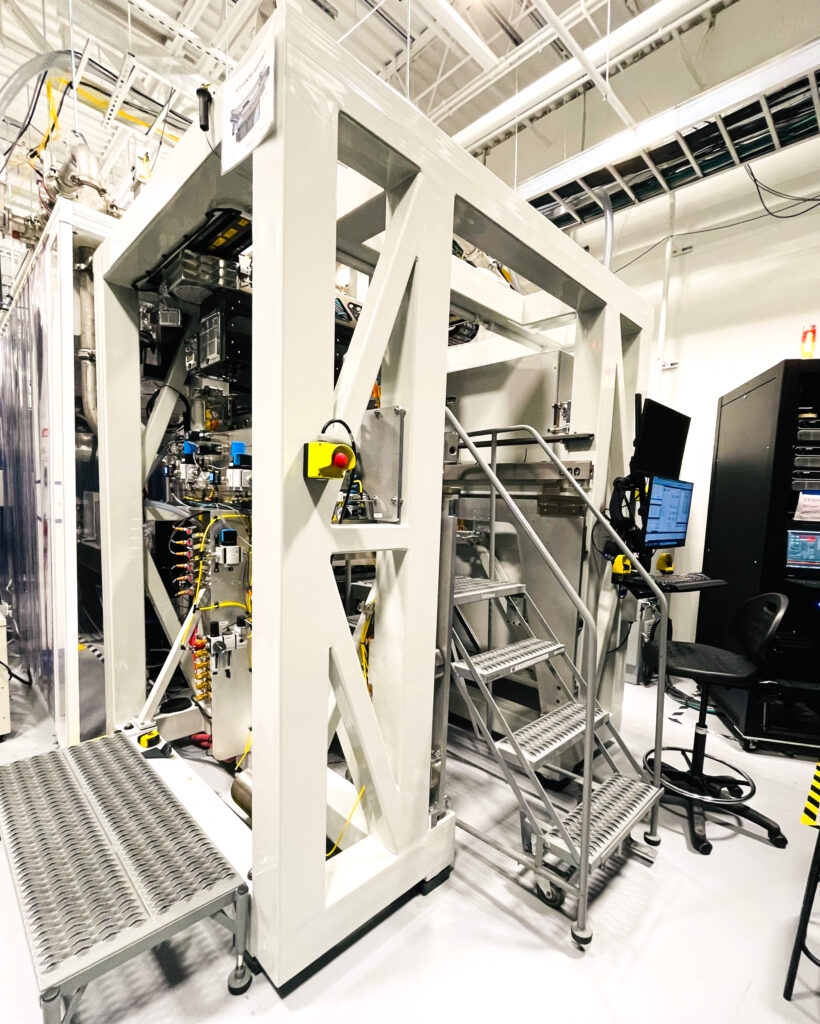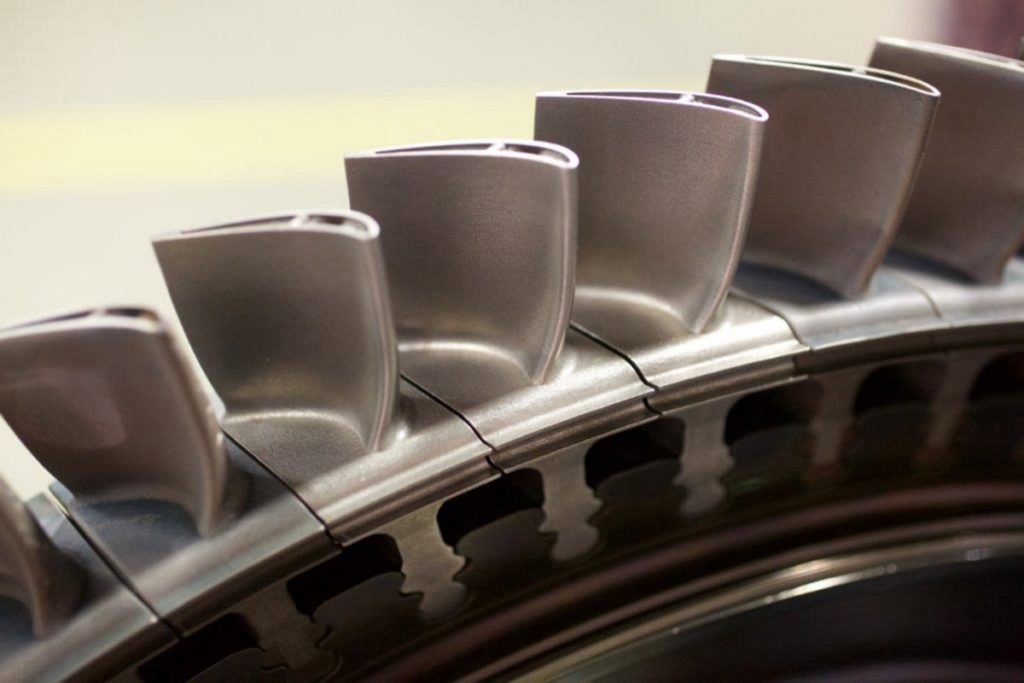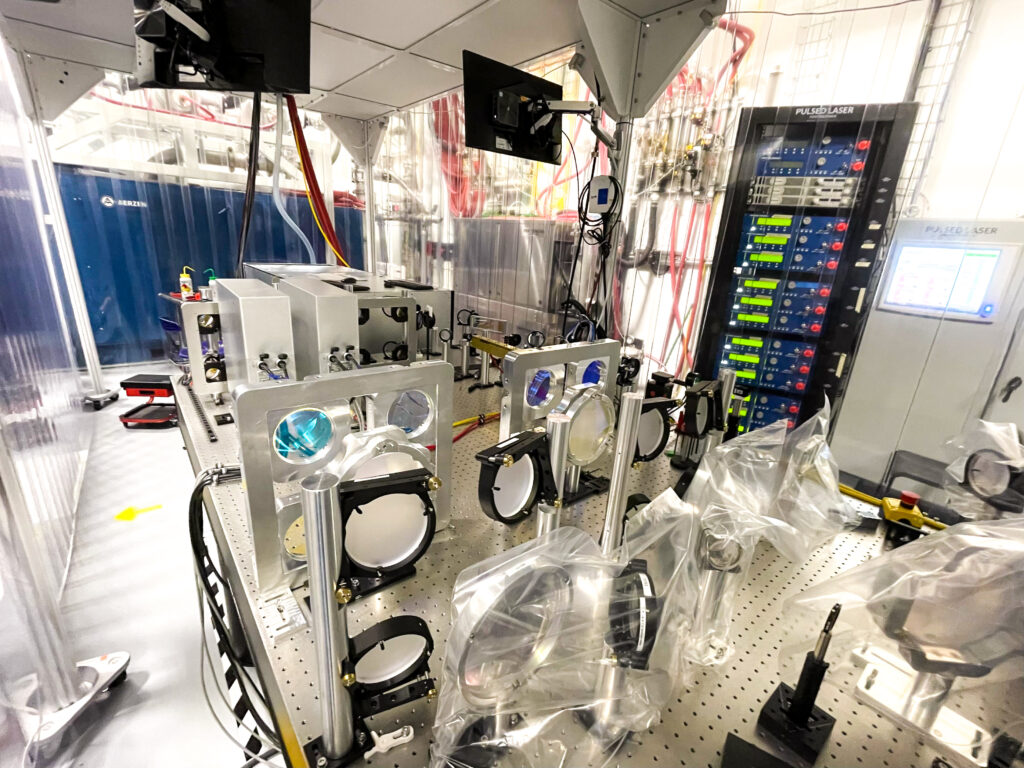In March, the Biden Administration unveiled the $6 billion Industrial Demonstrations Program to decarbonize industrial manufacturing within a broader strategy to shift toward cleaner energy and more resilient supply chains. In part, the U.S. plan spurred other nations, like Canada and Australia, to follow suit. As these funds are doled out, we’ll see exactly how they are put into action and which members of industry will be the ones leading the charge, but it’s certain that additive manufacturing (AM) represents one of the most adept technologies for the process.
Given its existing tactic for decarbonizing manufacturing, it should be no surprise that 3D printing startup Seurat Technologies would be just one of these industry leaders. At RAPID + TCT, Seurat announced that it aims to 3D print 59 tons of metal parts for Siemens Energy turbines. Beginning with a single part family, the collaboration is designed to ramp up over the course of six years to potentially include other component categories. We spoke to Seurat CEO James DeMuth to learn more.
Decarbonizing Manufacturing with 2 Million Points of Laser Light
Among the many facets of global society that require decarbonization, manufacturing is said to be one of the largest contributors of greenhouse gas (GHG) emissions at 31 percent of the total. Since its founding as a spinout of Lawrence Livermore National Laboratory (LLNL), Seurat has been dedicated to changing that.
Up until now, laser powder bed fusion (LPBF), the dominating technology in metal 3D printing, has been reserved for high-cost, low-volume parts due to its low throughput. To become cost competitive with traditional, polluting forms of production in terms of cost, scale, and quality, Suerat developed Area Printing. Using microchips built in-house, the process converts a single laser beam into 2 million points of light to more rapidly 3D print metal parts.

The print chamber for Seurat’s alpha Area Printing system.
By increasing the throughput of metal 3D printing by such a degree, the company believes that it can supplant conventional fabrication methods. Rather than sell machines to do so, Seurat will be operating its own series of microfactories to 3D print parts for customers.
“Often folks look at indirect applications [for AM], like making a turbine blade operate at a higher temperature, increasing the efficiency of the turbine from 50 to 60 percent. That’s one way to look at it—with additive enabling new capabilities. Those are great,” DeMuth said. “But what if you could do that in the actual manufacturing of parts. What we see is that there are a bunch of [conventional manufacturing techniques that are] really big contributors to emissions that are impacted by additive. Today, machining makes up about 46 percent of the overall manufacturing industry. Casting is about 20 percent. Forging is the remainder. What we’re doing through our Area Printing technology is we’re bringing to bear capabilities, technology, production rates, and, most importantly, cost that frankly can compete directly with conventional manufacturing techniques.”
In the process of replacing casting and machining with Area Printing, Seurat believes it can mitigate 100 metric tons of CO2 by 2030—a forecast that has been validated according to ISO 14064 standards—by reducing (GHG) emissions linked to waste material, freight, transportation, and warehousing. Seurat anticipates mitigating as much as 100 metric tons of CO2 by 2030 and has validated its carbon footprint forecast according to ISO 14064 standards.
Starting with Siemens Energy
Siemens Energy has long been a user and innovator of AM technologies, relying on metal 3D printing to produce turbines for its power generation products. In fact, it is such a super user that not only did it acquire an AM service bureau, but it launched an advanced manufacturing site in North Carolina and backed a recently established 3D printing platform called MakerVerse. Moreover, the company went so far as to invest in Seurat via Siemens Energy Ventures, dedicated to innovative energy and decarbonization technologies and business models.

Siemens 3D printed turbine blade, not made with Seurat’s technology. Image courtesy of Siemens Energy.
However, DeMuth pointed out that all of Siemens’ use cases for additive so far have been for low volume components. As such, those components were not of interest to Seurat. With Area Printing, Seurat is targeting a part family within Siemens Energy that would typically be made with casting and machining. If all goes well with the initial project, Seurat will be able to expand from that first part family to the hundreds of other components Siemens uses for its energy generation technology.
“What we bring to bear is the capability to have a much lower price point, open up the market and now look at different parts. We looked at [Siemens’ 3D printed] parts first and didn’t find a fit. We then looked at cast and machined parts and we found some fits. And we’re just scratching the surface with that first intro part. They have hundreds of parts.”
In fall 2022, Seurat said that its pilot factory was already fully subscribed, leading the startup to plan the opening of its full-scale production factory. With just one printer, Seurat will be able to 3D print 10 tons a year for Siemens Energy. As it broadens to more part families and more customers, the company will be able to roll out more of its microfactories, each made up of 20-30 printers pumping out 500 tons annually. To 3D print the hundreds of potential components scoped out for Siemens Energy, Seurat would need at least three of those microfactories just fulfill orders for a single customer.
Building out 3D Printing Microfactories
Following its roadmap for the Siemens deal alone, it’s pretty clear how promising Seurat’s overall business strategy is. However, as exciting as it may be, the company is still early in its roll-out. The alpha machine for Area Printing is expected to be online this quarter, followed by the deployment of two more machines 30 days or so after that. By 2024, Seurat aims to add another 3D printer per quarter through the year. In 2025, this goal is ramped up to one system per month.

The print engine for Seurat’s alpha system.
In the process, the company will both be able to fund its own operations through its 3D printing services while also attracting capital and loans by boasting such larger customers as Siemens.
“These machine deployments are eminently financeable through traditional debt financing when you have these sorts of customer contracts in place. What our sales team is doing is working with customers to get them lined up,” DeMuth said. “This really helps accelerate and fund those machine deployments because, with debt financing, that means we can use our hard-earned venture dollars to pursue other activities, other expansion capabilities. The goal here is that we can actually use the revenues from those machines to pay for themselves in a more appropriate timespan. Unlike a machine sales model where you get a whole bunch of money up front, with part production you obtain revenues over time, but you make more money, in general.”
Electrifying Production
DeMuth has had sustainable energy on his mind since he was an engineer at LLNL, developing nuclear fusion technology. While there, he thought metal AM for the production of nuclear fusion parts was feasible, but that the technology just didn’t have the scale to do so successfully. With Seurat, he realized that he could impact fossil fuel dependence indirectly, by displacing conventional manufacturing.
Moreover, as a purely electric fabrication process, Area Printing doesn’t have to depend on fossil fuels for making parts. Powering Seurat’s pilot facility is 100 percent renewable energy, a crucial factor in reducing the carbon footprint of 3D printing compared to conventional technologies, according to a recent report from the AM Green Trade Association (AMGTA). Going forward, the startup plans to continue relying on renewables for its production sites, as well.
“We found that, for the power plant we were building, we could print it and it could get all the material properties and all the geometries and everything we needed to enable fusion power. It just was going to take 200 years to do so, and that’s not gonna work, right? Fusion’s always 50 years away, not 200 years away,” DeMuth joked, highlighting the dangling carrot of nuclear fusion.
“You’re not in control of what energy your customers are using, so, what are the direct areas that you can impact,” he continued. “That sort of had us take the next level down to say, ‘We’re an all-electric process. We’re talking about outcompeting casting, eventually forging and machining, on a price per kilo basis.’ If you do that, and if you can scale, what happens then? That’s how we get to those numbers of one hundred megatons a year by 2030. Fast forward to 2050 and we’re talking gigaton levels that we could potentially offset just through what we can directly impact.”
The Seurat CEO has a “rising-tide-lifts-all-boats” attitude when it comes to electrification. As the company builds out its network of microfactories, it plans to not only power its own operations with renewables, but to also supply the neighboring community with them. This is particularly important in a world of increasing energy insecurity, where residents in Europe struggled to pay fuel bills as a result of skyrocketing oil and gas prices related to the war in Ukraine.
“If you can’t run your process because you’re relying on the grid and a balance of how everyone else is using it, that’s a problem,” DeMuth said. “We don’t want to be a drain on the system. We want to help grow the system and do it with green and renewable energy. And, potentially, there’s an opportunity here where we can be the impetus to deploy green renewable energy that far out-supplies our needs. It actually helps the local communities be bolstered for subsequent growth and conversion to green power.”
The Advanced Manufacturing Renaissance
Of all of the companies able to benefit from the slew of new programs dedicated to re-shoring and developing sustainable manufacturing, Seurat is likely among the firms that will benefit from local and federal funding. In addition to the impact the company plans to have on manufacturing emissions, the fact that it manufactures the chips for its own laser technology could play an important role in developing a local semiconductor manufacturing industry.

The extremely elaborate optics table for Seurat’s alpha system.
With the potential for funding from the CHIPs Act, it’s possible that, in the long-term, Seurat could even build itself into the U.S. semiconductor supply chain. While the chips it builds power the optical devices to execute those two million points of laser light, DeMuth believes those same semiconductors could have other applications in powering electronics.
“We fabricate those [microchip] devices in house. We build them, assemble them, test them, qualify them. We throw them in a machine and we make ’em work, right?” DeMuth said. “I think there are a lot of capabilities there for us to vertically integrate and help grow the market there in a lot of different ways. It also turns out that the semiconductors that we use also have other applications in power electronics, so we potentially can bolster other similar industries using similar chips because they have multiple use cases and capabilities. We’ll see where it goes, but we think there’s a lot of overlapping capability.”
In other words, his ambitions for the firm are far broader than even making 59 tons of metal parts for Siemens turbines. It’s only the beginning for Seurat, but if all goes according to DeMuth’s plans, the startup won’t just be an AM company in the long-term, but a critical part of the manufacturing ecosystem in the U.S. and beyond.
All images courtesy of Seurat, unless otherwise stated.
Subscribe to Our Email Newsletter
Stay up-to-date on all the latest news from the 3D printing industry and receive information and offers from third party vendors.
You May Also Like
Gorilla Sports GE’s First 3D Printed Titanium Cast
How do you help a gorilla with a broken arm? Sounds like the start of a bad joke a zookeeper might tell, but it’s an actual dilemma recently faced by...
Nylon 3D Printed Parts Made More Functional with Coatings & Colors
Parts 3D printed from polyamide (PA, Nylon) 12 using powder bed fusion (PBF) are a mainstay in the additive manufacturing (AM) industry. While post-finishing processes have improved the porosity of...
$25M to Back Sintavia’s Largest Expansion of Metal 3D Printing Capacity Since 2019
Sintavia, the digital manufacturing company specializing in mission-critical parts for strategic sectors, announced a $25 million investment to increase its production capacity, the largest expansion to its operations since 2019....
Velo3D Initiates Public Offering in a Bid to Strengthen Financial Foundations and Drive Future Growth
Velo3D (NYSE: VLD) has been among a number of publicly traded 3D printing firms that have attempted to weather the current macroeconomic climate. After posting a challenging financial report for 2023,...































